DeFi 2.0: Beyond the Crypto Chaos – Real-World Assets Land
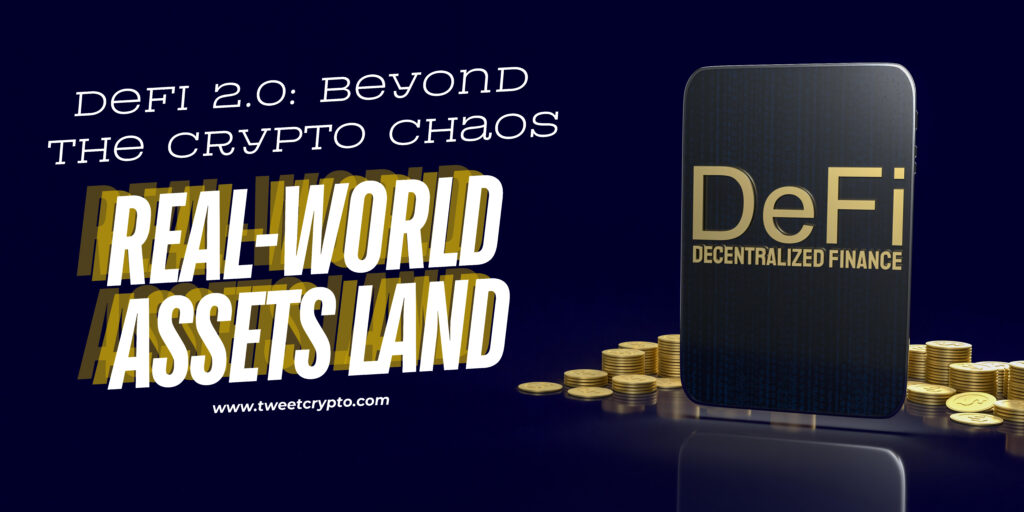
Remember that wild ride DeFi took us on in 2021? Soaring token prices, mind-blowing yields, and enough acronyms to make your head spin (looking at you, DAO, LP, AMM). But then came the crash, and suddenly the DeFi party felt more like a frat house after a keg stand – messy and uncertain.
Fear not, crypto warriors! DeFi isn’t dead, it’s just evolving. Enter DeFi 2.0, where the magic of decentralized finance meets the stability of real-world assets. That’s right, we’re talking about bridging the gap between the cryptosphere and the tangible world, like houses, cars, or even that sweet new skateboard you’ve been eyeing. Let’s unpack this revolution, shall we?
you may also like :
- Introduction
- The rollercoaster of DeFi 1.0
- Introduction to DeFi 2.0
- DeFi 1.0: A Wild West of Innovation
- The basics of DeFi 1.0
- The risks and rewards
- The Evolution to DeFi 2.0
- Why DeFi 2.0 is necessary
- Key differences between DeFi 1.0 and DeFi 2.0
- Stability Through Real-World Assets
- Concept of real-world assets in DeFi
- Examples of real-world assets
- Real-World Asset Lending
- How it works
- Benefits and drawbacks
- Borrowing Against Fractional Ownership
- Explanation of fractional ownership
- Real-world examples
- Technical and Legal Challenges
- Regulatory landscape
- Legal complexities
- Technological Hurdles
- Emerging technologies
- Potential issues and solutions
- The Promise of DeFi 2.0
- Potential benefits for the financial system
- Long-term outlook
- Use Cases in Action
- Real estate
- Art and collectibles
- Vehicles
- Regulatory Environment
- Current regulations
- Future regulatory trends
- Security Measures in DeFi 2.0
- Enhanced security protocols
- Risk management strategies
- Community and Governance
- Role of decentralized governance
- Community involvement
- Future Innovations in DeFi 2.0
- Upcoming technologies
- Potential new applications
- Conclusion
- Summary of DeFi 2.0’s impact
- Final thoughts on the future
- FAQs
- What is DeFi 2.0?
- How do real-world assets stabilize DeFi?
- What are the challenges of DeFi 2.0?
- How can I get involved in DeFi 2.0?
- What does the future hold for DeFi 2.0?
DeFi 2.0: Beyond the Crypto Chaos – Real-World Assets Land
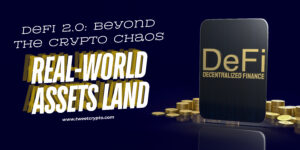
Introduction
Remember the DeFi craze of 2021? Tokens skyrocketed, yields were astronomical, and the jargon alone could give anyone a headache. But the subsequent crash left the scene looking more like a post-party cleanup at a frat house. DeFi seemed uncertain, chaotic, and risky. But fear not, crypto warriors! DeFi isn’t dead—it’s simply evolving. Welcome to DeFi 2.0, where decentralized finance meets the stability of real-world assets. Imagine bridging the cryptosphere with tangible assets like houses, cars, or even that skateboard you’ve been eyeing. Let’s dive into this exciting new chapter!
DeFi 1.0: A Wild West of Innovation
The Basics of DeFi 1.0
DeFi 1.0 was a revolutionary financial system built on code, not traditional banking structures. It enabled borrowing, lending, and trading on permissionless blockchains, free from the grips of central banks and financial institutions. It was a game-changer, democratizing access to financial services.
The Risks and Rewards
While DeFi 1.0 offered incredible rewards, it was also fraught with risks. Most DeFi applications relied solely on crypto assets as collateral, which could be highly volatile. This volatility made borrowing and lending risky, leading to a rollercoaster of value changes that could wipe out users overnight.
The Evolution to DeFi 2.0
Why DeFi 2.0 Is Necessary
DeFi 2.0 emerged to address the instability and risks inherent in DeFi 1.0. The goal was to create a more stable and reliable system by integrating real-world assets. This evolution aims to harness the innovation of DeFi while mitigating the wild swings in asset values.
Key Differences Between DeFi 1.0 and DeFi 2.0
The main difference lies in the collateral used. While DeFi 1.0 relied heavily on volatile crypto assets, DeFi 2.0 introduces real-world assets as collateral. This shift brings a level of stability and security that was previously missing, making the ecosystem more attractive and sustainable.
Stability Through Real-World Assets
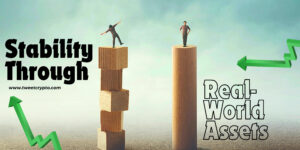
Concept of Real-World Assets in DeFi
Real-world assets include anything tangible that holds value, such as real estate, vehicles, or even artwork. In DeFi 2.0, these assets can be tokenized and used as collateral, providing a stable foundation for financial transactions.
Examples of Real-World Assets
- Real Estate: Properties can be tokenized, allowing parts of their value to be used in DeFi transactions.
- Vehicles: Cars and other vehicles can serve as collateral for loans.
- Art and Collectibles: High-value items like paintings or rare collectibles can be tokenized for financial leverage.
Real-World Asset Lending
How It Works
In DeFi 2.0, real-world assets are used as collateral for loans. For instance, if you own a car and need a loan, you can leverage your car’s value to secure a loan in a stablecoin (a cryptocurrency pegged to a real-world asset like the US dollar) through a DeFi protocol. This process eliminates the need for traditional banks and often results in lower interest rates.
Benefits and Drawbacks
Benefits:
- Stability: Real-world assets provide a stable collateral base.
- Lower Interest Rates: DeFi loans often have lower rates compared to traditional loans.
- No Bank Approval Needed: The process is decentralized, reducing the need for bank intervention.
Drawbacks:
- Regulatory Uncertainty: The regulatory environment for DeFi is still evolving.
- Legal Complexities: Linking real-world assets with DeFi involves navigating legal hurdles.
- Technological Challenges: The tech infrastructure is still maturing, with potential glitches.
Borrowing Against Fractional Ownership
Explanation of Fractional Ownership
Fractional ownership allows multiple investors to own a share of a high-value asset, such as a piece of art or real estate. Each investor holds a fraction of the total value, which can then be used as collateral in DeFi transactions.
Real-World Examples
Imagine wanting to invest in a Picasso painting but finding the price tag daunting. With DeFi 2.0, you could buy a fraction of the painting. Your ownership stake can then be used as collateral for a loan, allowing you to leverage the value of the asset without owning it outright.
Technical and Legal Challenges
Regulatory Landscape
Governments worldwide are still figuring out how to regulate DeFi. The landscape is constantly changing, and new regulations could impact how DeFi operates.
Legal Complexities
Integrating real-world assets with DeFi involves significant legal hurdles. Issues around asset ownership, transfer, and collateralization need to be addressed, requiring robust legal frameworks and agreements.
Technological Hurdles
Emerging Technologies
DeFi 2.0 relies on emerging technologies such as blockchain, smart contracts, and tokenization. These technologies are still developing, and their adoption comes with technical challenges.
Potential Issues and Solutions
Issues:
- Scalability: Handling a large number of transactions efficiently.
- Security: Ensuring the safety of assets and data.
- Interoperability: Integrating various systems seamlessly.
Solutions:
- Advanced Protocols: Developing robust protocols for better scalability and security.
- Enhanced Security Measures: Implementing state-of-the-art security practices to protect assets and data.
- Interoperable Platforms: Creating platforms that can easily interact with different systems.
The Promise of DeFi 2.0
Potential Benefits for the Financial System
DeFi 2.0 has the potential to revolutionize finance by combining the innovation of DeFi with the stability of real-world assets. This integration can lead to a more secure, inclusive, and efficient financial system.
Long-Term Outlook
The long-term outlook for DeFi 2.0 is promising. As technology matures and regulatory frameworks develop, DeFi 2.0 could become a cornerstone of the global financial system, offering new opportunities for investors and businesses alike.
Use Cases in Action
Real Estate
Tokenized real estate can be used as collateral for loans, enabling property owners to leverage their assets without selling them.
Art and Collectibles
High-value art and collectibles can be tokenized, allowing owners to use these assets for financial transactions in DeFi.
Vehicles
Cars and other vehicles can be tokenized and used as collateral, providing liquidity for asset owners.
Regulatory Environment
Current Regulations
The current regulatory environment for DeFi is in flux. Different countries have different approaches, and the landscape is evolving rapidly.
Future Regulatory Trends
Future trends may include more comprehensive regulations that provide clarity and security for DeFi participants. These regulations could help DeFi gain wider acceptance and integration with traditional financial systems.
Security Measures in DeFi 2.0
Enhanced Security Protocols
DeFi 2.0 emphasizes enhanced security measures to protect assets and transactions. This includes advanced encryption, multi-signature wallets, and secure smart contract development practices.
Risk Management Strategies
Effective risk management strategies are crucial in DeFi 2.0. This involves regular audits, real-time monitoring, and contingency planning to handle potential issues swiftly and efficiently.
Community and Governance
Role of Decentralized Governance
Decentralized governance plays a critical role in Decentralized Finance 2.0. Community-driven decision-making ensures that the ecosystem remains transparent, fair, and aligned with the interests of its participants.
Community Involvement
Community involvement is vital for the growth and success of Decentralized Finance 2.0. Engaged communities can provide valuable insights, support project development, and promote wider adoption.
Future Innovations in DeFi 2.0
Upcoming Technologies
Technologies such as decentralized identity, cross-chain interoperability, and advanced AI-driven analytics are on the horizon for Decentralized Finance 2.0. These innovations promise to further enhance the functionality and appeal of decentralized finance.
Potential New Applications
New applications could include decentralized insurance, more sophisticated lending platforms, and integration with traditional financial services. These innovations will expand the reach and utility of Decentralized Finance 2.0.
Conclusion
Decentralized Finance 2.0 represents a significant evolution in decentralized finance. By integrating real-world assets, it brings much-needed stability and opens up new opportunities for users. While challenges remain, the potential for Decentralized Finance 2.0 to revolutionize the financial landscape is immense. As we navigate this new frontier, the fusion of digital and tangible assets promises a more secure and inclusive financial future.
FAQs
What is DeFi 2.0?
DeFi 2.0 is the next generation of decentralized finance, focusing on integrating real-world assets to provide greater stability and security compared to the original DeFi systems.
How do real-world assets stabilize DeFi?
Real-world assets, such as real estate or vehicles, are less volatile than crypto assets. Using them as collateral in DeFi transactions reduces risk and enhances stability.
What are the challenges of DeFi 2.0?
Challenges include regulatory uncertainty, legal complexities, and technological hurdles related to scalability, security, and interoperability.
How can I get involved in DeFi 2.0?
You can get involved by exploring DeFi platforms that support real-world asset integration, participating in community governance, and staying informed about regulatory developments.
What does the future hold for DeFi 2.0?
The future of DeFi 2.0 looks promising, with potential innovations in technology and new applications that could transform the financial landscape, making it more inclusive and efficient.

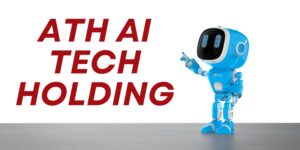
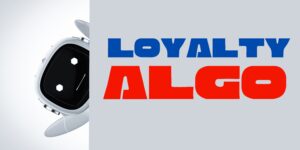
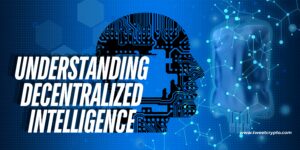

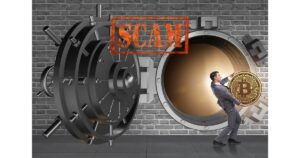


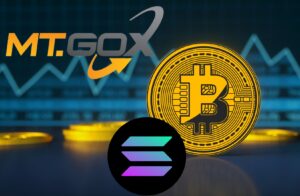
 Bitcoin
Bitcoin  Ethereum
Ethereum  Tether
Tether  Solana
Solana  XRP
XRP  Dogecoin
Dogecoin  USDC
USDC  Lido Staked Ether
Lido Staked Ether  Cardano
Cardano  TRON
TRON  Shiba Inu
Shiba Inu  Wrapped Bitcoin
Wrapped Bitcoin  Toncoin
Toncoin  Avalanche
Avalanche  Wrapped stETH
Wrapped stETH  Bitcoin Cash
Bitcoin Cash  Sui
Sui  Chainlink
Chainlink  WETH
WETH  Polkadot
Polkadot  Pepe
Pepe  LEO Token
LEO Token  Stellar
Stellar  Litecoin
Litecoin  NEAR Protocol
NEAR Protocol  Aptos
Aptos  Wrapped eETH
Wrapped eETH  Uniswap
Uniswap  USDS
USDS  Cronos
Cronos  Hedera
Hedera  Internet Computer
Internet Computer  Ethereum Classic
Ethereum Classic  Bonk
Bonk  Render
Render  Ethena USDe
Ethena USDe  Bittensor
Bittensor  POL (ex-MATIC)
POL (ex-MATIC)  WhiteBIT Coin
WhiteBIT Coin  Dai
Dai  MANTRA
MANTRA  Artificial Superintelligence Alliance
Artificial Superintelligence Alliance  dogwifhat
dogwifhat  Monero
Monero  Stacks
Stacks  Arbitrum
Arbitrum  Filecoin
Filecoin  OKB
OKB